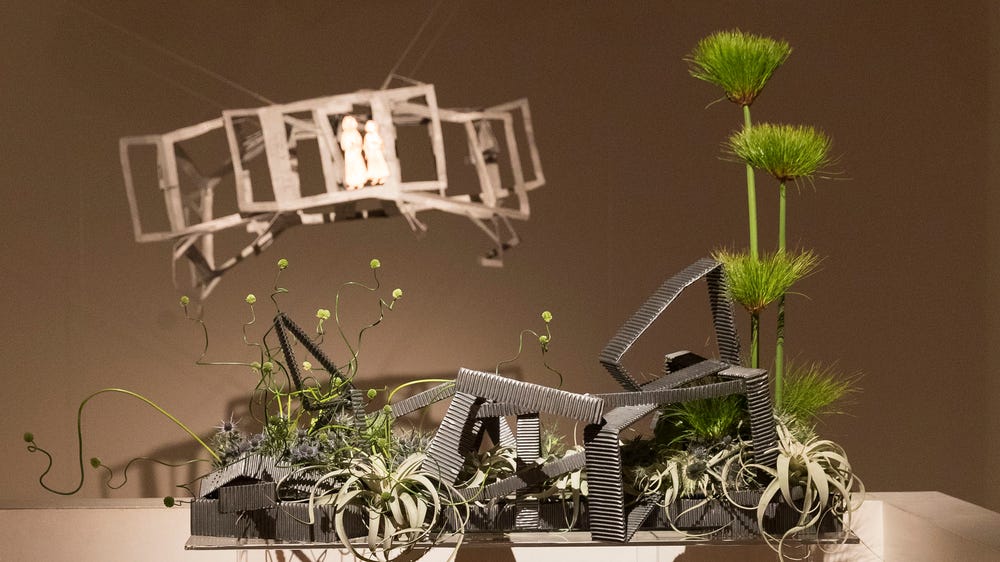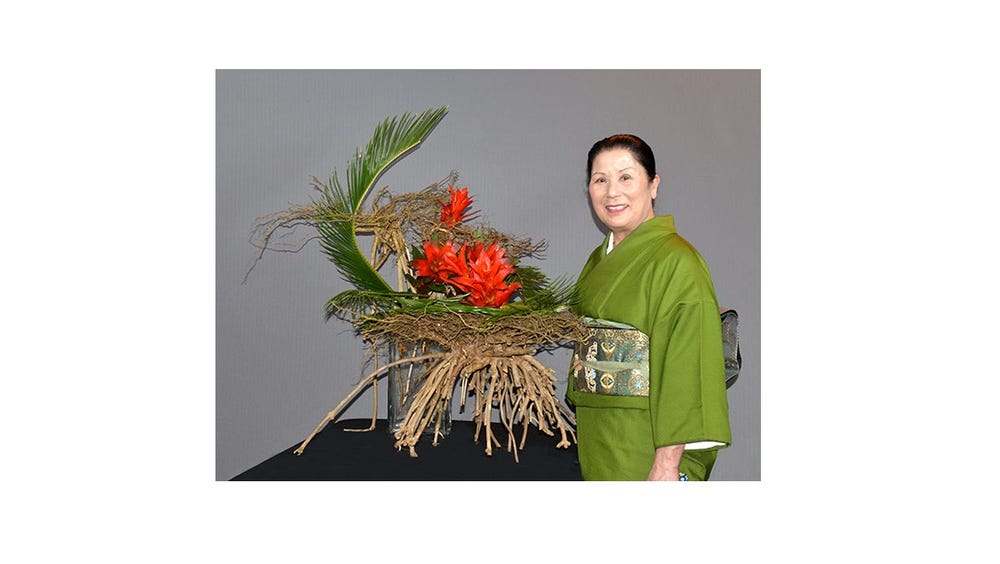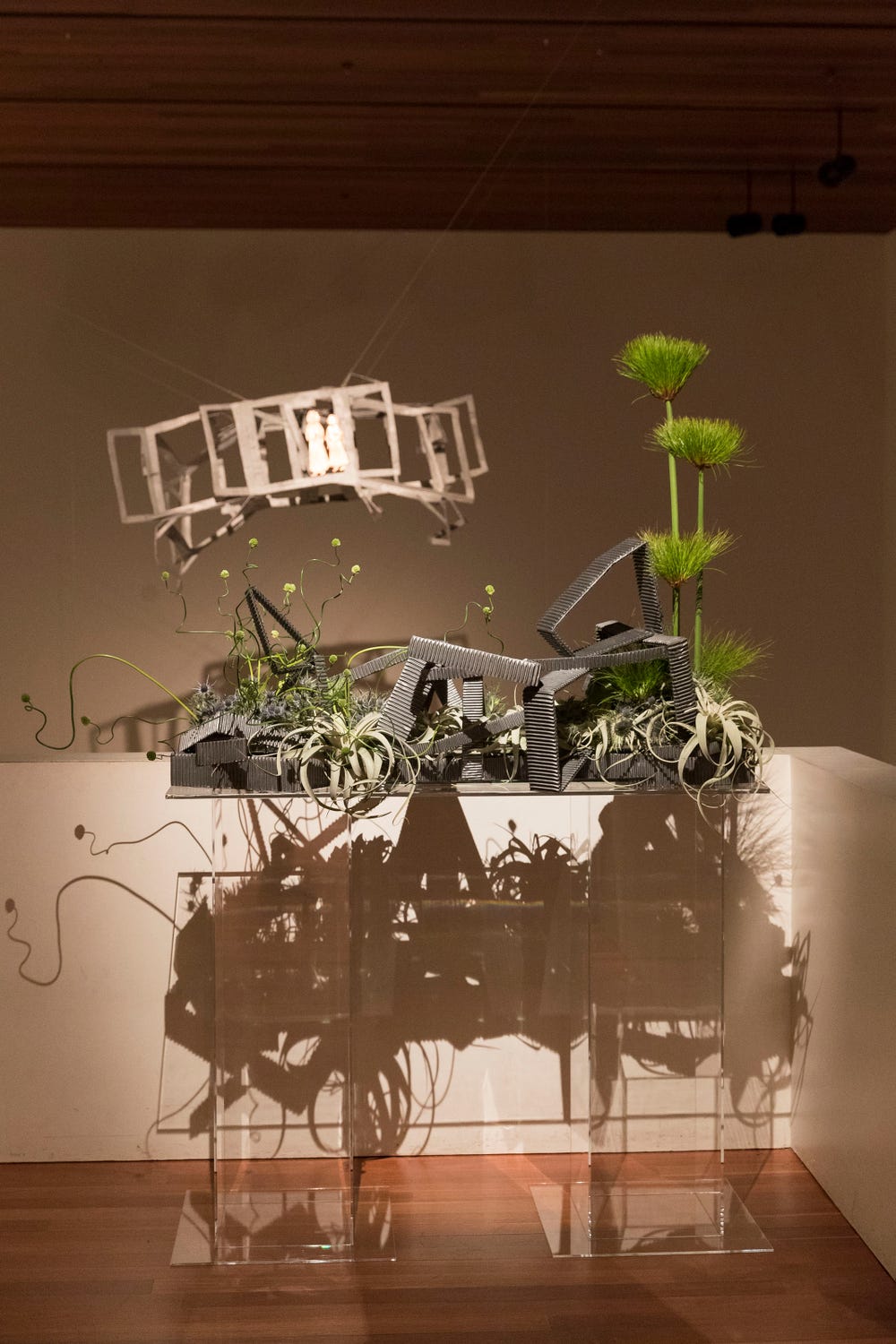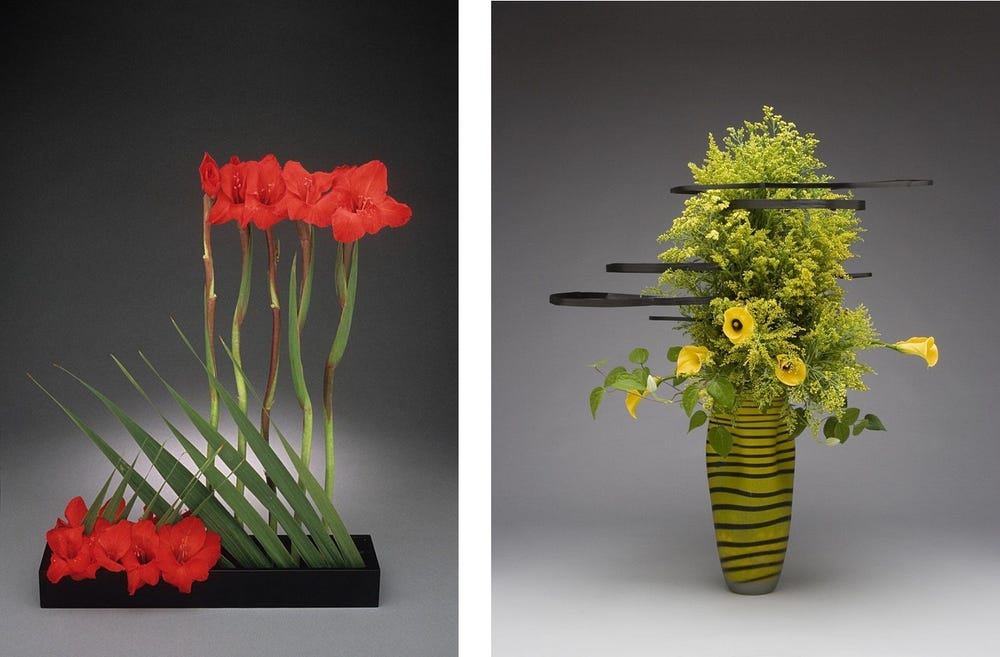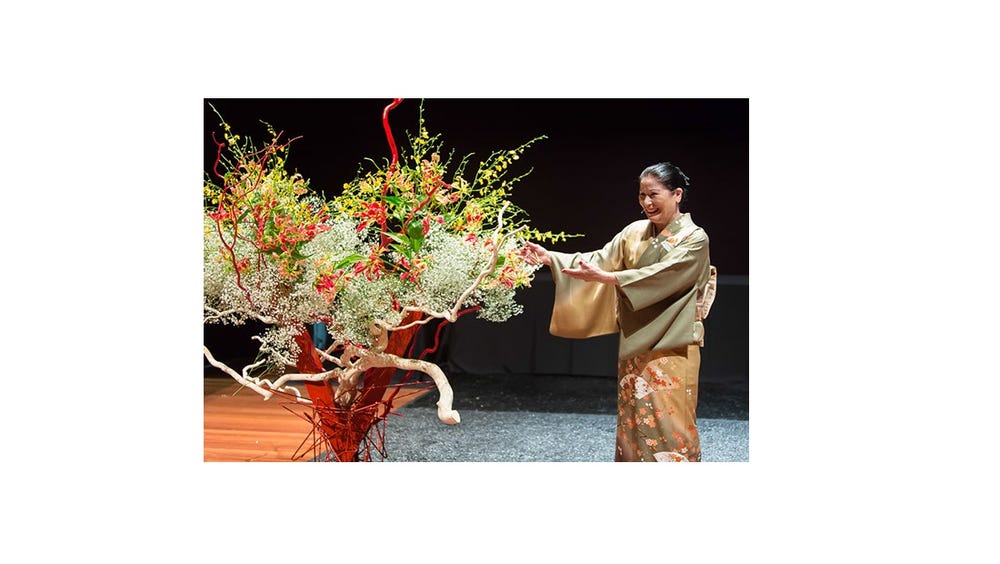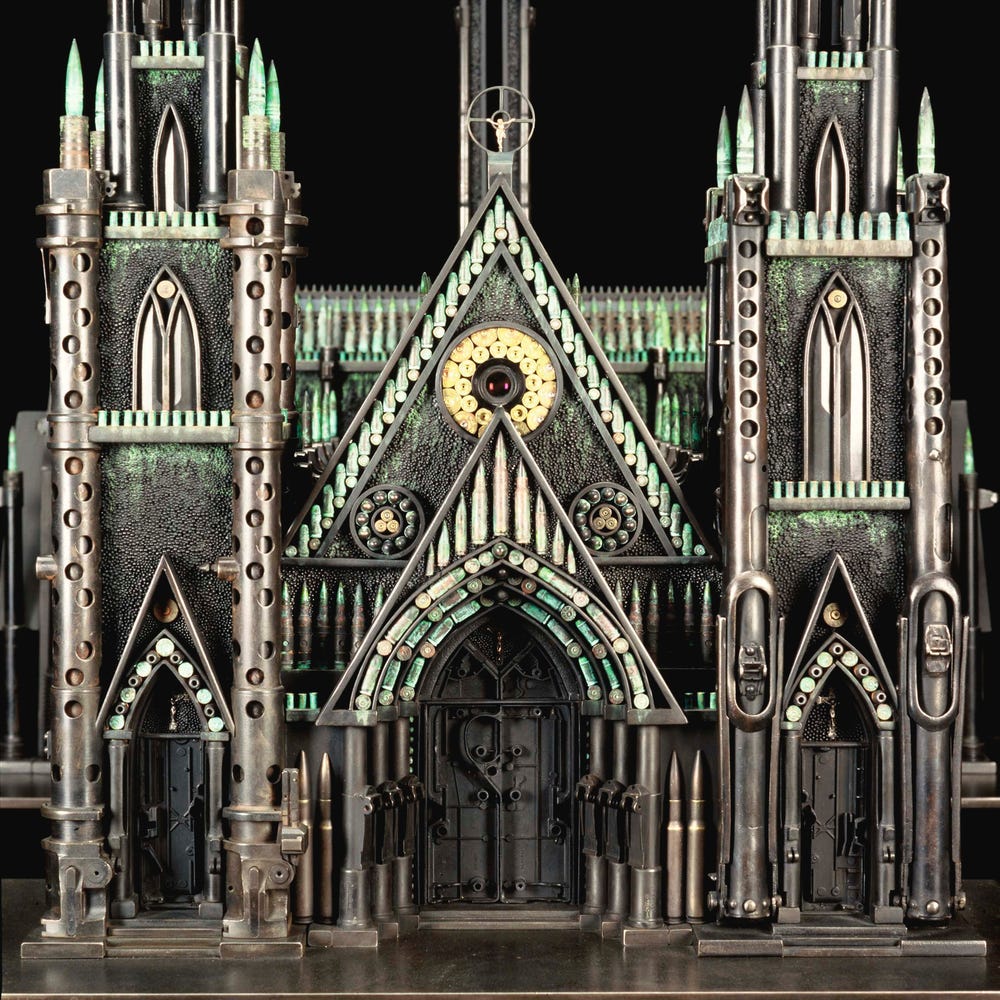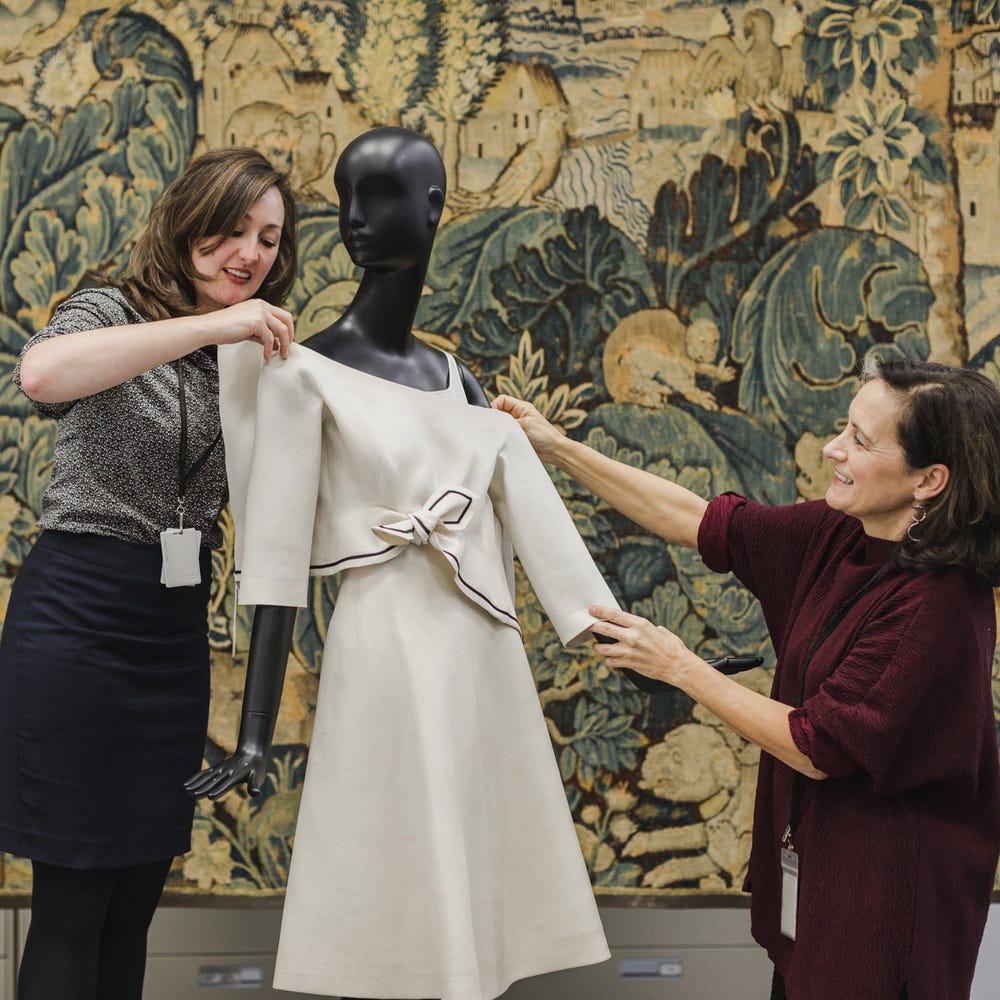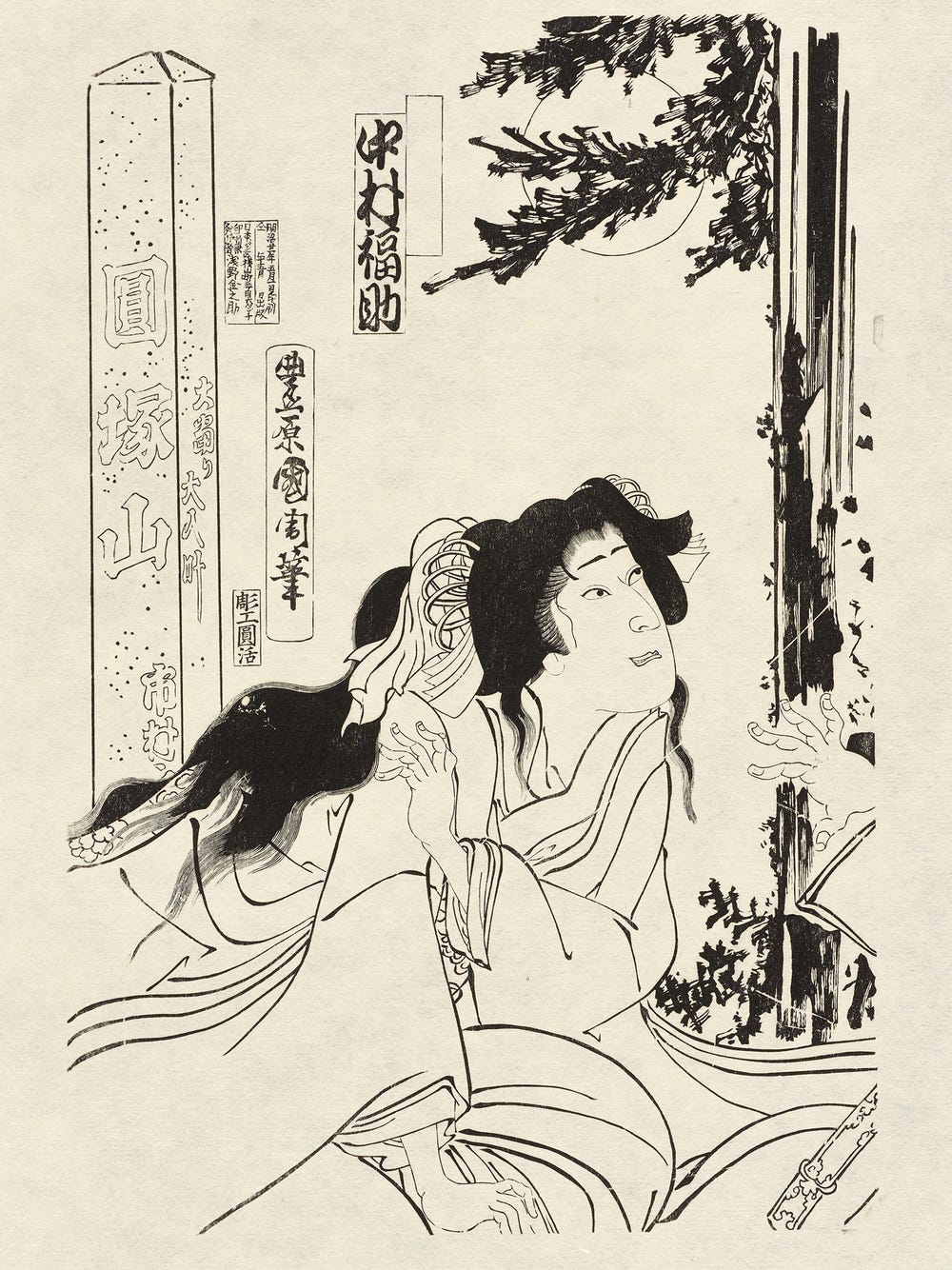Well-respected, international ikebana teacher Soho Sakai began practicing the ancient Japanese art and discipline of ikebana in 1957 in Kumamoto, Japan. As a longtime Bouquets to Art exhibitor and presenter, Sakai has spent her career studying the relationship between ikebana and nature, exploring how she can create beauty with feelings. In celebration of Virtual Bouquets to Art, and Sakai’s 80th birthday, special events coordinator and Bouquets to Art organizer Cheyenne Tang caught up with Sakai to discuss the history of Bouquets to Art, ikebana, and where she finds inspiration.
Image courtesy of Soho Sakai
Cheyenne Tang: Thank you so much for taking the time to chat with us. We’re thrilled to hear about your experience with Bouquets to Art as a longstanding exhibitor and program presenter for over 35 years. In 1985, Bouquets to Art launched at the old de Young building, moving briefly to the Legion of Honor and then back into the new de Young in 2005. As one of our original exhibitors, could you share what it was like to do Bouquets to Art in all three buildings?
Soho Sakai: When I was asked to participate the first time at the old de Young, it was such an honor. It was a very formal occasion and it meant everything to me to be asked. I was so excited, I even bought my own vase. I still remember it; it was a large, tall, antique bronze vase.
I find inspiration in all of the artwork in the museum. But when the new de Young opened, I was inspired by the new building’s exterior. I made a large, wide, and narrow arrangement using copper sheets to match it. I was also excited to participate in Bouquets to Art at the new de Young because it was the first time we could choose our own artwork and space. Previously, we were assigned artwork and locations within the galleries.
Looking back, I am happier to do the designs at the de Young versus the Legion of Honor. The de Young is located at the center of the Golden Gate Park and is much easier for people to visit.
—Soho SakaiPainting is an expression of art drawn on a canvas with a brush. Ikebana is an expression in three dimensions.
Image courtesy of Soho Sakai
CT: You specialize in ikebana. Can you explain what ikebana is for those of us who aren’t familiar?
SS: Ikebana is Japanese flower arranging. It is difficult to identify the true origins of ikebana, but it is believed to have stemmed from offering flowers to Buddha, a custom which developed into the art of ikebana. I like to compare it to a painting. While a painting is an expression of art drawn on a canvas with a brush, ikebana is an expression in three dimensions composed of plant material arranged in a vase. For me, ikebana is a way of life, an artistic way to enrich the mode of your life and the concept of your environment, with the help of all the forms of plant life.
CT: How did you get your start in ikebana, in particular your school of Sogetsu?
SS: In 1957, as a very young girl, I began to study ikebana in my hometown of Kumamoto, Japan. I received my teacher's diploma from the Sogetsu School of Ikebana in 1961, just prior to coming to the United States. I now hold the title of riji, the highest rank of the Sogetsu School.
During the Meiji era, the government adopted ikebana as a part of curriculum for a girl’s education. It was regarded as a necessary social grace for the young women of Japan before marriage. So what initially started as bridal training to become a good wife has now become a deep passion and way of life for me.
CT: Wow, that is fascinating! It is my understanding that there are more than 1,000 different schools of ikebana. Can you explain the difference between Sogetsu and the other schools of ikebana?
SS: The Sogetsu School was established in 1927 by the late iemoto (headmaster), Sofu Teshigahara. The primary concept for the Sogetsu School is that it can be created anytime, anywhere, by anyone in any part of the world, using any kind of material. Sogetsu is deeply rooted in Japanese tradition, but also has a modern twist.
There are virtually innumerable schools of ikebana in Japan, but of all of them, I believe Sogetsu is the most creative and the best anywhere in the world. Plants are the products of Mother Nature, but the basic principle of Sogetsu is “Ikebana reflects the person who arranged it.” Sogetsu has a strong emphasis on individual expression. Natural materials are often used in unexpected and creative ways.
Sogetsu doesn’t have any strict rules like some other classic ikebana schools. Students of Sogetsu have the joy of expressing themselves with plants. In Sogetsu, students carefully look at the plants, discover their beauty, and enjoy the pleasure of self-expression through their own arrangement.
Images courtesy of Soho Sakai
CT: Do you have a favorite California native plant or flower?
SS: I love every tree and every flower! I can’t pick just one, but I do love the redbud tree. Redbud in Japanese is called “soho.”
CT: So many artists find inspiration in the Bay Area. What are some of your favorite places in the Bay Area to get inspiration?
SS: It is hard to say what my favorite places are because I love San Francisco! When there isn’t traffic, I like to drive across the Bay Bridge or Golden Gate Bridge to see San Francisco’s horizon. I also gain inspiration from viewing the city from the South Bay and Twin Peaks. And of course, I enjoy visiting the de Young museum, SFMOMA, and the Asian Art Museum. Many of my students make weekly arrangements at the de Young and Asian Art Museum, so I often visit to see the floral arrangements.
CT: What advice would you give to someone who wants to learn ikebana?
SS: I think anybody who loves nature, flowers, and plants will enjoy ikebana. Those who feel as if they can talk and listen to nature can learn ikebana. If you gaze at a flower or a tree, they look beautiful, blooming in their natural environment. They can hardly be improved upon. It is up to you and your aesthetic awareness to assemble the materials, choose their most beautiful aspects, put them in a different order, and endow them with a value transcending that which they had in nature. Arranging ikebana begins with careful observation of the plant materials.
Image courtesy of Soho Sakai
Text by Cheyenne Tang, special events coordinator and Bouquets to Art organizer.
